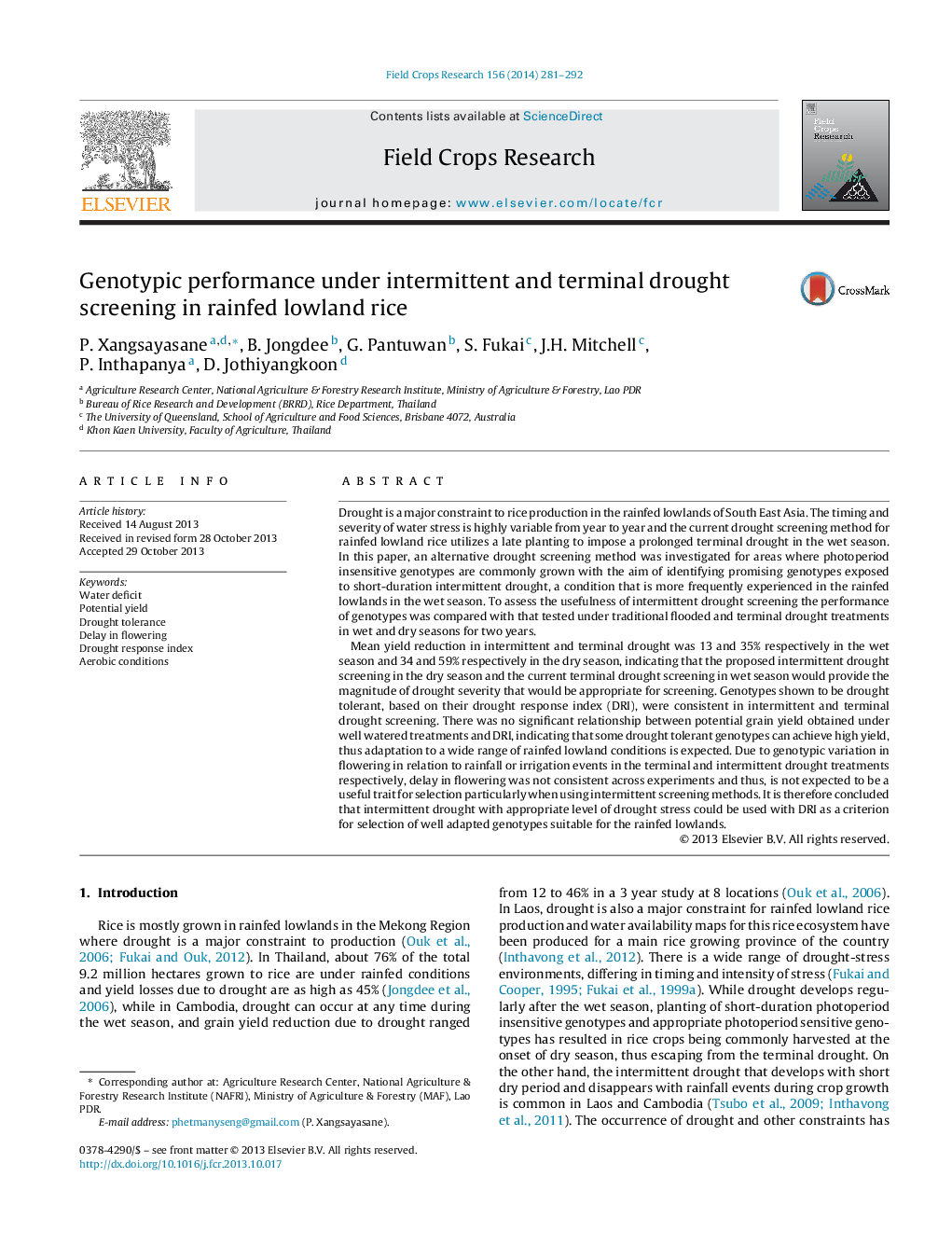| Article ID | Journal | Published Year | Pages | File Type |
|---|---|---|---|---|
| 6375139 | Field Crops Research | 2014 | 12 Pages |
Abstract
Mean yield reduction in intermittent and terminal drought was 13 and 35% respectively in the wet season and 34 and 59% respectively in the dry season, indicating that the proposed intermittent drought screening in the dry season and the current terminal drought screening in wet season would provide the magnitude of drought severity that would be appropriate for screening. Genotypes shown to be drought tolerant, based on their drought response index (DRI), were consistent in intermittent and terminal drought screening. There was no significant relationship between potential grain yield obtained under well watered treatments and DRI, indicating that some drought tolerant genotypes can achieve high yield, thus adaptation to a wide range of rainfed lowland conditions is expected. Due to genotypic variation in flowering in relation to rainfall or irrigation events in the terminal and intermittent drought treatments respectively, delay in flowering was not consistent across experiments and thus, is not expected to be a useful trait for selection particularly when using intermittent screening methods. It is therefore concluded that intermittent drought with appropriate level of drought stress could be used with DRI as a criterion for selection of well adapted genotypes suitable for the rainfed lowlands.
Related Topics
Life Sciences
Agricultural and Biological Sciences
Agronomy and Crop Science
Authors
P. Xangsayasane, B. Jongdee, G. Pantuwan, S. Fukai, J.H. Mitchell, P. Inthapanya, D. Jothiyangkoon,
